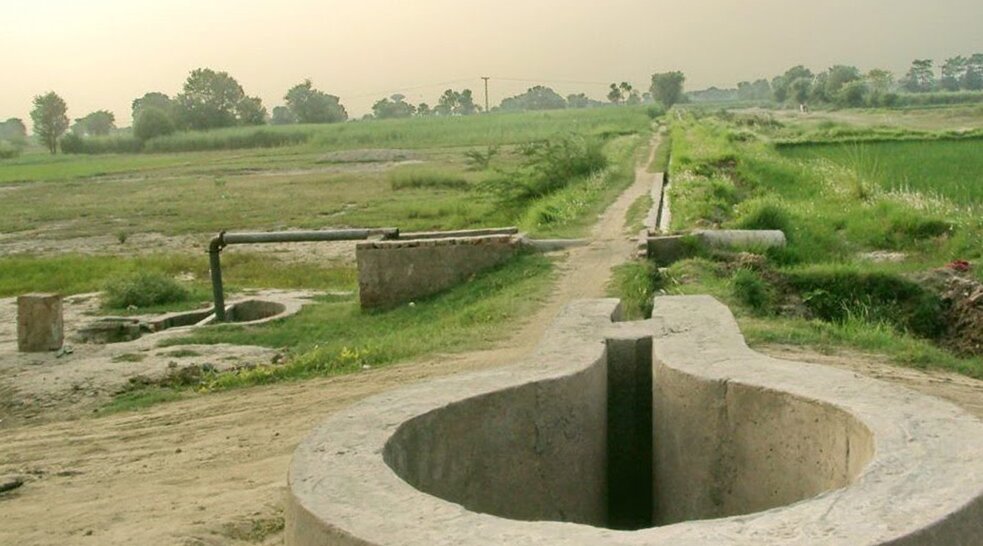Pakistan is a country located in South Asia and covers an area of over 796,095 square kilometers. Its total population is about 220.9 million as of 2020 census. In 2020, the crime rate in Pakistan was estimated at 3.84, with a 2.09% rise as compared to 3.76 in 2019. It is lower than the global average of 6.1 crimes per 100,000 people. These statistics show that although the crime rate in Pakistan is lower than the global average, we cannot claim to be a safe country.
However, there’s a village in Punjab with zero crime rate and 100% literacy. Read about that village in today’s article.
Crime Rate in Pakistan
 According to official data from the World Bank, the crime rate or Intentional homicide per 100,000 people in Pakistan is estimated at 3.84 in 2019. It is higher than 3.76 as reported in 2018. Although a rise is seen in the latest crime rates, Pakistan has put in much effort to reduce crimes. The current crime rate is high but is lesser than the global average of 6.1 per 100,000 people. Accordingly, there are 3.8 cases of murders per 100,000 population in Pakistan, in 2019.
According to official data from the World Bank, the crime rate or Intentional homicide per 100,000 people in Pakistan is estimated at 3.84 in 2019. It is higher than 3.76 as reported in 2018. Although a rise is seen in the latest crime rates, Pakistan has put in much effort to reduce crimes. The current crime rate is high but is lesser than the global average of 6.1 per 100,000 people. Accordingly, there are 3.8 cases of murders per 100,000 population in Pakistan, in 2019.
Reports found that nearly 8,000 people were murdered in 2019 alone. Evidently, the most common forms of murder in Pakistan are suicide bombing, honor killings, burglary, etc. A few years earlier, the major cause of murder and crime was suicide bombing and terrorist attacks. According to the United Nations Office on Drugs and Crime (UNODC), suicide bombing has been the most common form of violent crime in the country, making up over 20% of the total violent crime cases. But thanks to the government and armed forces of Pakistan, these crimes have been significantly reduced.
The crime rate in Pakistan has been decreasing since 2008. Pakistan saw a significant decrease in crime rate and a safe environment was established in the country. By 2008, the crime rate in Pakidtan had grown to approximately 10, and thankfully it has been reduced to 3.84, according to latest data. However, it still remains relatively high when compared with several other countries. Although, there are also countries that have much higher crime rates than Pakistan such as USA, South Africa, Brazil, etc.
Major Causes and Forms of Crimes in Pakistan
Most crimes in Pakistan occur due to poverty, unemployment, and political instability. In addition, many criminals engage in the sale of drugs and the manufacture of fake products. The incidence of domestic violence in Pakistan is also increasing. This is because of the high divorce rates in Pakistan.
It should be noted that Pakistan does not have statistics for domestic violence. However, according to the International Institute for Women’s Policy Research, nearly 20% of the women in the country have suffered from domestic violence at least once.
About Punjab – Where the Village is Located
Punjab is a province of Pakistan and has its capital in Lahore. Punjabis are generally friendly, welcoming and cheerful. They are famous for their love for food, dance and singing. Punjabi culture is mainly centered on strong family ties, loyalty, respect for elders and religious tolerance.
There are several languages spoken in Punjab: Punjabi, Hindko, Multani, Saraiki, and Pahari-Pothwari, and definitely the national language Urdu. The population of Punjab is estimated to be more than 110 million, with a literacy rate of 63% (as of 2020). This is higher than all the other provinces of Pakistan.
The people of Punjab are known to be very simple, hardworking, honest, sincere, generous and loving. Punjabis have a strong sense of social harmony and are extremely hospitable towards strangers.
Most of the population of Punjab is Muslim, with small minorities of Hindus, Christians, Sikhs, Buddhists, and Parsis. Punjab has a huge influence in the field of art, music, literature, and film, which is reflected in the language, culture, and art of the province.
Literacy Rates in Pakistan
Literacy is one of the most significant factors affecting a person’s quality of life. It also has a profound impact on a country’s socio-economic development. Literacy rates in Pakistan are intermediate. The overall literacy rate in Pakistan is 62.3%, with 69.29% of males and 46.49% of females being literate (according to 2019 statistics). Pakistani adult literacy rates are lower than the average rate of 86% worldwide (in 2019).
Pakistani literacy rates, particularly female literacy rates, have improved much over the years. In 2006, female literacy rates were only 39.61% and male literacy rate was 67.65%. While the national literacy rate was 54.15%. Since then Pakistan has been working hard to educate the masses and improve the national literacy rates as a whole, and particularly the female literacy rates. The results of these efforts are evident in the current statistics.
Educational Policies Implemented by the Pakistani Government
During the last few decades, the government of Pakistan has invested heavily in education. Pakistan’s government has implemented various policies aimed at improving literacy in the country, including:
- National Literacy Program
- Building more schools in rural areas
- Improving teaching methods
- Creating more libraries
- Training teachers
- Providing more resources to schools
- Improving infrastructure
- Giving more scholarships to students
Read More: Education System of Pakistan: What Needs to be Improved
Rasool Pur — The Pakistani Village with 100% Literacy and 0% Crime Rate
It is a city that is famous for its zero crime rate and its 100% literacy. Rasool Pur city is a village located in Jampur Tehsil of Rajanpur, Punjab, Pakistan. It has a population of only 2000. Most of the residents in this village are ethnic Balochs. The main language spoken is Seraiki. It is famous for its agriculture and dairy industry. There are many parks in Rasool pur city, one of them is the park of Rasool pur village, which is located in the outskirts of Rasool pur city.
In this village, all children attend school and pay attention to their education from a very young age. The residents very well understand the importance of education. All the residents of Rasool Pur are literate. However they are not just capable of writing their name or basic information, as the word literacy is defined. All of the inhabitants of Rasool Pur attend high school. Moreover, the village is an outstanding example of cleanliness. Further, there are no crimes, and is perfectly safe for everyone. There is history of murder, burglary, dacoity, or any other crime. It perfectly portrays what an educated society looks like.
There are many reasons why this city can become a popular tourist destination. One of the most important reasons is due to its location. Lush green fields and beautiful trees surround it. Another reason is the clean and peaceful atmosphere of the village.
Rasool Pur – A Perfect Example for Us
For the last several years, this village in Punjab has had zero crime. That’s right, zero. In fact, literacy rates are at 100%. So, what does this mean for the rest of us? How do we compare?
We tend to think that there is some kind of magical equation that will let us know whether our country is successful or not. But when it comes to crime and education, there are many different factors that we must be take into consideration. A country with high levels of literacy can lead to better business practices. It also helps to reduce crime, because the fewer illiterate citizens there are, the less crime there will be.
When a person is educated and literate, they are able to gain a better understanding of how the world works. They are able to communicate with others effectively because they have developed critical thinking skills. Additionally, a person who is educated is likely to work harder, because they know that education can benefit them in the future.
Why do Crime Rates Increase?
There are many reasons why crime rates increase. These include:
- Poverty – Poverty is the root cause of the increase in crimes worldwide and in Pakistan. When people are poor, they are not able to make both ends meet, and this indulge in crimes like theft, burglary, etc, to satisfy their hunger and needs.
- Lack of educational opportunities – Individuals who aren’t prepared to get jobs will find it harder to survive. Moreover, education provides a way to groom oneself, and to know and discriminate right and wrong. Right education teaches morals and ethics, thus reduce criminal behavior among populations.
- Unemployment – A major cause of high criminality is unemployment. This is also the reason leading to poverty. When a large number of people are sitting idle, without work and earning, they ultimately indulge in crimes.
- An unhealthy neighborhood – People in unsafe environments will find it harder to deal with life’s challenges and tend to adopt the malpractice found in an unhealthy neighborhood.
- A lack of mental health services – If people are struggling with trauma or mental illnesses, it can lead to a lack of proper treatment and an increased tendency to commit crimes.
- Lack of parenting skills – Parents who are unable to effectively parent and train their children will cause them to act out in a destructive, and often times, criminal way.
Related: How to Lodge a Complaint in FIA Cyber Crime Wing?
How to Reduce Crime Rates?
Since many criminals have a history of unhealthy childhood and lack of education. The following are a few steps that parents can take to prevent their children from acting out in a destructive way, and reduce the tendency of criminal behavior from a very young age:
- Ensure that your child has stable housing.
- Make sure your child has access to educational opportunities.
- Ensure that your child has access to mental health services.
- Encourage your child to participate in activities that build self-esteem.
- Be patient, but firm with your children.
Some General Steps
There are some more general guidelines for all of us to act on and help reduce crime rates. A variety of measures can be taken at the community and individual level to reduce crime rates:
- Communities can work to create a sense of belonging and connectedness, which reduces crime.
- Programs that provide opportunities for positive engagement, such as after-school activities and job training, can also be effective in reducing crime rates.
- At the individual level, taking steps to build resilience and positive coping mechanisms can help prevent involvement in criminal activity.
- Practicing healthy behaviors, such as eating well and getting enough sleep, can also help make individuals less likely to resort to criminal activity as a way to cope with stress or problems.
- Get to know your neighbors. If you sense something wrong around you, inform the authorities and police.
- Develop a positive relationship with the police.
- Join or support a neighborhood watch group.
- Install security features on your home and keep your home and yard well-lit.
- Avoid becoming a victim of opportunity crime an be aware of your surroundings.



